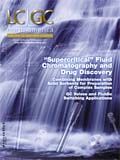Prevention is Better Than Cure: An Alternative Approach in Sample Preparation of Complex Samples
LCGC North America
Combining a membrane with a solid sorbent can improve selectivity and save time in sample preparation.
Sample handling of complex samples such as plant materials is a challenge because of the presence of organic matrix compounds that may interfere with the selective extraction. The approach presented here involves the use of a membrane to physically separate the selective sorbent from the original sample. Thus, matrix components can be prevented from reaching the sorbent and the operation can be performed before the concentration step, thereby saving time. Examples of this approach will illustrate its effectiveness.
Sample handling of complex samples such as plant materials, sludge, and sediments remains a challenge because of the multitude of organic matrix components that are present. Most of these interfering compounds have similar polarity to the target compounds, making it difficult to wash them out even with selective sorbents without the risk of also eluting the target compounds. Often, membrane extraction techniques alone also lack sufficient selectivity when dealing with such samples. The traditional approach for dealing with samples like this is to preconcentrate both the matrix and analyte followed by an additional cleanup step (or steps). The combination of membrane and solid sorbent into a single format has the potential to create synergy that allows selective extraction of a target compound, even from complex samples. This approach prevents most of the matrix components from getting adsorbed onto the solid sorbent. This short review highlights the benefits of combining a membrane with a solid sorbent into a single format.
Sample preparation and cleanup steps are of paramount importance before the analysis of any chemical in plant materials, sediments, or wastewater because of the many interferences found in such samples. The approach before the advent of selective sorbents (such as molecularly imprinted polymers [MIPs] and immunosorbents) has been to extract the sample with a nonselective method such as liquid–liquid extraction followed by the cleanup step of the extract using silica, alumina, and other sorbents, and packed columns or solid-phase extraction (SPE) cartridges or disks. This approach has been accepted in sample preparation of chemicals in complex samples and is still in widespread use. However, with the advent of more-selective sorbents (1,2), that approach is becoming less popular. Using selective sorbents has the advantage that the extraction, preconcentration, and cleanup occur in a single step, thus consuming less time and using less organic solvent. Thus, sample throughput is increased compared to when extraction and cleanup are two independent steps.
However, as more applications are being done in sample preparation using selective sorbents, in some cases, results have revealed that these selective sorbents may not always offer the desired selectivity, which is a common problem in the extraction of chemicals from plant materials (3,4). Plant material is composed of many interfering compounds present as both small molecules and macromolecules, and selective sorbents are ineffective in some cases (3,4). For MIPs, because the backbone polymer is nonspecific, interfering matrix compounds that are usually present in higher amounts compared to the target chemicals are adsorbed on the backbone. The MIP is usually washed with an appropriate solvent after sample extraction to remove some of the interfering compounds. In some cases, it has been shown that it is difficult to wash out all of these interfering compounds without also losing the target compounds (3,4).
The new approach, depicted in Figure 1, is becoming more common in dealing with complex samples and is designed to prevent both the matrix and the target analyte from being extracted simultaneously (3,5–9). This approach makes more sense because matrix components are prevented from adsorbing on the sorbent altogether. Surely, it does not make sense to preconcentrate the matrix components, already in high concentration, and then try to perform cleanup afterwards. The new approach tries to prevent the matrix components from being extracted and preconcentrated simultaneously, along with target chemicals. This approach is likened to the idea that "prevention is better than cure" in medicine.

Figure 1: Schematic representation of the new approach for the extraction of complex samples.
For this purpose, rather than being physically separate devices, selective sorbents have been incorporated into an appropriate membrane in a layered approach. The membrane acts as a barrier against most interfering compounds, allowing minimal adsorption on the sorbent inside. This approach still combines extraction, preconcentration, and cleanup in one step with minimal matrix components adsorbing on the sorbent inside the membrane. In a related approach, an immuno-supported liquid membrane that makes use of antibody (Ab)–antigen interaction as the trapping media has been reported (10).
Membranes Used in Combination with Sorbents
The common type of membrane material that has been used to hold sorbents in the acceptor phase is Accurel Q3/2 polypropylene hollow fiber from Membrana GmbH (Wuppertal, Germany) (6,8,9,11–13). The inner diameter of these hollow fibers is 600 µm, the thickness of the wall is 200 µm, and the pore size is 0.2 µm. For a flat sheet membrane used for separating the sample and sorbent material, type FG porous PTFE membranes with polyethylene backing (5,7) were purchased from Millipore (Bedford, Massachusetts). These membranes have a 0.2-µm pore size, a porosity of 0.70, and a total thickness of 175 µm, of which 115 µm is polyethylene backing. The membrane-assisted solvent extraction (MASE) technique that has been used in combination with molecularly imprinted SPE consists of dense polypropylene (3). The membrane bag is 4 cm in length and has a 0.03-mm wall thickness, and a 6-mm internal diameter (Gerstel, Mulheim, Germany). Both PTFE and polypropylene used in these combinations are inert materials and very resistant against organic solvents and acids. The hollow-fiber modules are supplied as bundles and are therefore very cheap and can be used once, then thrown away. Using them as disposable consumables prevents any problems such as membrane fouling and clogging. The MASE bag is very easy to regenerate and can be used a number of times before disposal (3). When using membranes in combination with MIPs, they are easy to regenerate because the polymers are protected from dirty samples.
Membranes in Combination with Additional Sorbents
The combination of membranes with solid sorbents is attractive because it has the potential to increase selectivity when good selectivity with acceptor solvents or solid sorbents alone may not be easily realized. This combination is ideal for excluding large molecules from reaching the sorbent because they cannot pass through the pores of the membrane. This combination also is referred to as membrane-protected solid phase microextraction (SPME) (11) or membrane-protected SPE (12), depending on the actual setup. In membrane-protected SPME, an SPME fiber was enclosed in a porous polypropylene hollow fiber heat-sealed at one end (Figure 2). This combination was then immersed into stirred bovine milk and suspended sewage sludge samples for extraction of triazine compounds. The SPME fiber was protected from major matrix components found in bovine milk or sludge. Attempts were made to extract bovine milk samples directly without protecting the SPME fiber, but this led to the deposition of fatty material onto the gas chromatography (GC) column. The hollow-fiber SPME combination never experienced this problem and gave good separation with well-resolved peaks. The relative standard deviations for the reproducibility of the optimized hollow fiber membrane solid phase microextraction (HFM-SPME) varied between 4.30% and 12.37%. The same research group enclosed 6 mg of multiwalled carbon nanotube (MWCNT) in a sheet of porous polypropylene membrane whose edges were heat sealed. This combination is referred to as membrane-protected SPE and was used for the extraction of organophosphorus pesticides (OPPs) from sludge (12). This setup was wetted in dichloromethane and placed in a stirred sewage sludge solution to extract OPPs as model compounds. The porous membrane acted as a barrier against extraneous materials. After extraction, the analytes were desorbed with hexane and the extract was analyzed using gas chromatography–mass spectrometry (GC–MS) (12). The use of hollow-fiber membranes protected the multiwalled carbon nanotube and no further cleanup was required. Under optimized conditions, the repeatability of the method was 2–8%. The device could be reused for as many as 30 extractions, and no analyte carryover was observed.

Figure 2: Schematic representation of HFM-SPME. Adapted from Basheer and Lee (11).
A dynamic membrane-protected carbon nanotube solid-phase membrane tip extraction has been reported (8). In this case, multiwalled carbon nanotubes were enclosed in a small cone-shaped hollow fiber attached to a 1000-µL pipette tip. The pipette tip was attached to a pipette that was in turn clamped to a ring stand. The lower end of the hollow fiber was sealed. The prepared extraction device was placed in a stirred aqueous sample. After every 5 min, a dynamic extraction was performed by manually withdrawing 600 µL of the aqueous sample through the extraction tip; after a dwell time of 3 s, this volume was released back into the bulk sample through the hollow fiber containing carbon nanotubes. This process was repeated five times during the extraction period. After extraction, the cone-shaped membrane was taken out, rinsed in ultrapure water, and dried with lint-free tissue. Adsorbed triazine analytes were removed by ultrasonication in acetonitrile (100 µL). The selectivity of this combination was compared to molecularly imprinted solid-phase extraction (MISPE) in the extraction of triazines from river water and both were found to be comparable. The reproducibility of the method was 6–8% and the method showed good linearity from 1 to 100 µg/L. This setup may be useful for the isolation of more-complicated matrices, such as those of sludge and plant materials. The use of membrane protection of carbon nanotubes should greatly enhance their selectivity.
In other studies, carbon nanotubes have been impregnated in a porous membrane to facilitate the movement of target compounds from the donor into the acceptor phase (13,14). Hylton and colleagues (13) incorporated multiwalled carbon nanotubes as part of the impregnated organic phase in a three-phase micro supported liquid membrane extraction system. The incorporation of carbon nanotubes resulted in an improvement in amount extracted of 81% and 144% for the two compounds investigated. However, no selectivity studies of this setup have been demonstrated, especially for complicated samples. Therefore, it would be interesting to compare the selectivity with and without incorporation of carbon nanotubes. A similar approach was used to extract caffeic acid from herbal extracts and an improved extraction was observed (14). The relative standard deviation of this combination ranged from 3.59% to 5.37%. The selectivity of the extraction was demonstrated by comparing chromatograms of hydro-alchoholic extract of the plant E. Purpurea before and after microextraction under optimal conditions. The combination was selective for caffeic acid since higher amounts were extracted after the combination. Other peaks also were observed in the combination, though at lower concentrations. This may suggest that the incorporation of sorbent in the porous membrane increases the mass transfer but is not as selective as when the same is incorporated as part of the trapping media. More applications are still needed to demonstrate the selectivity where sorbents are incorporated into the porous membranes.
Membrane Combination with MIPs
A combination of membrane with MIPs either as particles (3,5,7) or as MIP fibers (6,9) has been reported. This approach of combining membrane extraction with MIPs is interesting because it allows the analyte to bind to an MIP sorbent in a nonpolar organic solvent. MIPs prepared by a noncovalent approach are known to work best in nonpolar solvents where selective extraction of the analytes is much better. Nemulenzi and colleagues (7) reported combining membrane extraction with MIP particles in the extraction of 17β-estradiol from aqueous samples. The extraction was performed in a stainless steel apparatus with two individual chambers separated by a hydrophobic flat membrane impregnated with organic solvent. The top chamber was filled with impregnating solvent along with MIP particles (30–50 mg). The sample solution was stirred and analytes diffused from the donor through the membrane into the bulk of the acceptor where they were selectively bound onto the MIP particles. Afterward, the organic solvent and MIP particles were separated and the target analyte was eluted with appropriate solvent. The same setup was used to extract triazine herbicides from plant extracts with MIP particles selective toward these compounds as part of the acceptor phase along with toluene (5). Trapped analytes from the MIP particles were desorbed with 90% methanol in water. In this study, besides enhanced selectivity, the addition of MIP particles was found to improve the mass transfer across the membrane. The selectivity of the method was demonstrated by direct injection of lettuce and apple extracts, with only organic solvent in the acceptor phase as well as the combination of organic solvent and the MIP. Chromatograms from direct injection showed huge matrix peaks that were reduced with organic solvent as the acceptor phase. The combination of the organic solvent and the MIP gave the cleanest chromatograms. The target compounds also were much sharper and higher in the chromatograms. The relative standard deviation ranged from 4% to 15%.
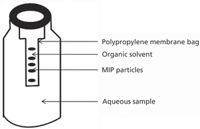
Figure 3: Schematic representation of the MASEâMISPE combination. Adapted from Chimuka and colleagues (3).
One of the major drawbacks of the combination of liquid membrane extraction with MIPs was the separation of the bulk acceptor solution from the MIP particles (5,7). In this case, the entire acceptor solution was passed through a microfilter where MIP particles were retained, dried, and target analytes desorbed with the appropriate solvent. This step was not very efficient in trapping all the MIP particles although the combination was very selective in the extraction of target compounds compared to liquid membrane extraction alone. Furthermore, slow mass transfer of the target compounds from the sample solution through the membrane into the bulk of the acceptor solution was observed because only the bottom membrane surface was in contact with the sample solution. The setup of the combination has since been improved by using MASE in combination with MIPs (3). The MASE technique is commercially available and is in the form of a tube made out of polypropylene. In the normal extraction mode using the MASE technique, the acceptor solution is organic. Analytes are extracted from the aqueous sample through the membrane into the bulk of the acceptor solution. In this combination, the organic acceptor solution of the MASE was incorporated with MIPs (Figure 3) (3). The MIP particles were separated from the bulk of the acceptor solution by passing through the mixture into an empty cartridge where all of the particles were trapped. The cartridge with MIP particles was dried and washed, and the target analytes were eluted with an appropriate solvent. The MASE–MIP combination showed remarkable selectivity compared to MIP with SPE or MASE alone for plant samples. Figure 4 shows the chromatograms obtained that demonstrate the selectivity in the combination (3). The relative standard deviations for the MASE–MIP combination were 7–20% for cowpea extracts and 2–9% for baby corn extract. These ranges were comparable to that of 5–16% for MIP-SPE in baby corn extracts and 2–14% for MASE alone with baby corn extract. The extraction efficiency was the highest using MIP-SPE; the MASE–MIP combination and MASE alone were comparable.
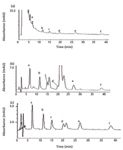
Figure 4: Chromatograms obtained after extraction of cowpea extract spiked with 50 µg L-1 mixture of each triazine with (a) MISPE, (b) MASE, and (c) the MASEâMIP combination. Column: 150 mm à 2.1 mm, 5-µm C18 Hypersil; mobile phase: 30% acetonitrile, 70% water; flow rate: 0.2 mL/min; detection: UV absorbance at 230 nm. Peaks: a = simazine, b = atrazine, c = prometon, d = terbumeton, e = terbuthylazine, f = prometryn. Adapted from Chimuka and colleagues (3).
Hu and colleagues (6) reported an interesting combination of hollow-fiber membrane with MIP fiber referred to as liquid–liquid solid microextraction (LLSME) technique (Figure 5). In this work, a terbuthylazine imprinted polymer coated silica fiber was protected with a length of porous polypropylene hollow-fiber membrane filled with a water-immiscible organic solvent. The device was then immersed in stirred samples of milk and urine. The analytes were diffused from the sample through the membrane into the bulk acceptor solvent and then adsorbed on the MIP-modified fiber. Performance of this system was compared to that of MIP-SPME and hollow-fiber membrane liquid-phase microextraction (HF-LPME). From this comparison, it was found that the LLSME integrated the advantages of MIP-SPME and HF-LPME. Selectivity of the combination was demonstrated by analyzing a spiked milk sample directly and after LLSME (Figure 6). The same procedure was repeated for a urine sample. In both cases, cleaner chromatograms were obtained from the combinations compared to direct injection. These results further demonstrate that the combination of a membrane and solid sorbent (whether MIP fiber or carbon nano tubes) has the potential to create synergy in selectivity. This combination prevents the matrix components from preconcentrating along with the target compounds. The relative standard deviation for the LLSME approach ranged from 1.2% to 9.6%. The Martin-Esteban research group (9) also combined supported liquid membrane extraction with molecularly imprinted fiber for the SPME of thiabendazole in orange juice. MIP fibers were located inside a polypropylene hollow fiber that was protected by an organic solvent impregnated as a thin supported liquid membrane (SLM) in the pores of the capillary wall. The extraction involved two steps: first, HF-LMPE of target compounds from the sample through the membrane into the bulk of the acceptor phase; and second, SPME of analytes from the organic acceptor phase into the MIP fiber inside the hollow fiber. This development was applied to the determination of thiabendazole spiked in orange juice and resulted in good selectivity. The relative standard deviation was below 10%, indicating good repeatability.
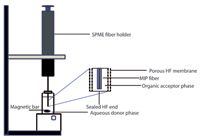
Figure 5: Schematic diagram of combination of SPME with MIP fiber and LPME with an enlarged view. Adapted from Hu and colleagues (6).
Immuno SLM
In immuno SLM, an anti-analyte (Ab) or anti-analytes (Abs) are introduced into the acceptor phase of the SLM unit to trap the analyte (Ag) that passes from the flowing donor phase through the SLM into the stagnant acceptor side. Quantification of the amount of immunoextracted analyte (AbAg) is performed by connecting the immuno-SLM setup on-line with a noncompetitive heterogeneous fluoresence flow immunoassay (FFIA). This makes use of a fluorescein-labeled analyte tracer that titrates the residual excess Ab present in the acceptor phase (15). To separate the two tracer fractions formed (Ag* and AbAg*), a restricted access (RA) column is used to separate the two and the eluted AbAg* fraction is measured downstream by a fluorescence detector. This combination takes advantage of the combined selectivity obtained from SLM and the Ab. In SLM extraction, only small molecules that are neutral at the sample pH are able to diffuse through the membrane. Charged small molecules and macromolecules are therefore blocked from reaching the acceptor phase. Immuno SLM–based methods have been reported for the analysis of triazines in orange juice and surface water (15,16), 4-nitrophenol in wastewater (10), progesterone in saliva (17), and 2,4,6-trichlorophenol from river water (18). In the determination of 2,4,6-trichlorophenol, the performance of the immuno SLM-FFIA approach was compared with a similar FFIA alone (without the extraction step). The results obtained show that recovery, sensitivity, and selectivity improve with immnuo SLM-FFIA compared to FFIA alone (18).
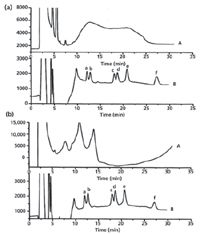
Figure 6: Chromatograms of the spiked (a) milk and (b) urine samples with 3.0-µg/L triazines by direct injection of the sample solution (curve A) and after extraction with LLSME (Curve B). Column: 250 mm à 4.6 mm, 5-µm C18 Diamonsil; mobile phase gradient: initial 45% acetonitrile (55% water) increased linearly to 50% acetonitrile in 15 min, with a hold at 50% for 15 min; detection: UV absorbance at 225 nm, Peaks: a= simetryn, b = atrazine, c = ametryn, d = propazine, e = terbuthylazine, f = terbutyrn. Adapted from Hu and colleagues (6).
Other Techniques
Although this review has focused on membrane-based techniques that try to prevent the sample matrix from being preconcentrated along with target compounds, there are other techniques that try to perform the same concept. These include restricted access media (RAM) for concentration of small molecules in complex biological samples (19–21). RAM chromatographic sorbent is based on a porous silica or organic polymer. Their pores have small diameters and are functionalized with ionic or hydrophobic groups, depending on the target compounds. For neutral compounds, hydrophobic groups are used and charged compounds are trapped using ionic groups. The outer surface of the packing is hydrophilic and nonadsorptive. This combination provides a means for combining size exclusion chromatography with partition or ion-exchange chromatography. Large molecules in biological samples are excluded from entering the pores while small molecules enter the pores and are trapped either through partitioning or ion exchange.
Conclusion
The combination of membranes with solid sorbents seems to be a promising alternative in sample preparation of complex samples. This combination allows the exclusion of most of the potential interfering matrices, thus giving cleaner final extracts. This approach is interesting because is it is the complete opposite of the traditional approach in which target compounds and matrix components are both preconcentrated followed by a cleanup step. In the combination of membrane followed by sorbent, the cleanup step occurs first followed by preconcentration of the target compounds in a single step. There is potential for some of these combinations to become commercialized soon, either as they are or after further modification. Besides giving selectivity enhancements, the stability and simplicity of such combinations will be very important for possible commercialization.
Luke Chimuka is an associate professor in the School of Chemistry at University of the Witwatersrand (Johannesburg, Africa) and a member of the environmental analytical chemistry research group. His research interests are in developing and modifying existing modern sample preparation techniques such as liquid-phase microextraction, passive samplers, and molecularly imprinted solid-phase extraction for organic analysis in complex samples. Direct correspondence to: luke.chimuka@wits.ac.za.

Luke Chimuka
Precious Sibiya is a final-year PhD student in the School of Chemistry at the University of the Witwatersrand (Johannesburg, Africa) in the environmental analytical chemistry research group. Her research focus is on method development and application using modern extraction techniques such as hollow fiber liquid-phase microextraction (HF-LPME), solid phase extraction (SPE), and microwave assisted extraction (MAE).

Precious Sibiya
Ewa Cukrowska is a full professor in the School of Chemistry at University of the Witwatersrand (Johannesburg, Africa) and a leader of the environmental analytical chemistry research group. She also is involved in the study of chemical speciation of pollutants in the environment; determination and modeling of pollutants transport, fate, adsorption, leaching, seasonal changes, biological uptake with chemometric evaluation and computer modeling of solution equilibria.

Ewa Cukrowska
Ronald E. Majors "Sample Prep Perspectives" Editor Ronald E. Majors is a Senior Scientist in the Columns and Supplies Division at Agilent Technologies in Wilmington, Delaware, and is a member of LCGC's editorial advisory board. Direct correspondence about this column via e-mail to lcgcedit@lcgcmag.com.

Ronald E. Majors
References
(1) M-C. Hennion and V. Pichon, J. Chrom. A 1000, 29–52 (2003).
(2) E. Turiel and A. Martin-Eteban, Anal. Chim. Acta 668, 87–99 (2010).
(3) L. Chimuka, M. Van Pinsteren, J. Billing, E. Yilmaz, and J.A. Jonsson, J. Chrom. A 1218, 647–653 (2011).
(4) C. Cacho, E. Turiel, A. Martin-Esteban, C. Perez-Conde, and C. Camara, Anal. Bioanal. Chem. 376, 491 (2003).
(5) B. Mhaka, E. Cukrowska, B. Tse Sum Buib, O. Ramstrom, K. Haupt, H. Tutu, and L. Chimuka, J. Chrom. A 1216, 6796–6801 (2009).
(6) Y. Hu, Y. Wang, Y. Hu, and G. Li, J. Chrom. A 1216, 8304–8311 (2009).
(7) O. Nemulenzi, B. Mhaka, E. Cukrowska, O. Ramstrom, H. Tutu, and L. Chimuka, J. Sep. Sci. 32, 1941 (2009).
(8) H.H. See, M.M. Sanagi, W.A.W. Ibrahim, and A.A. Naim, J. Chrom. A 1217, 1767–1772 (2010).
(9) F. Barahona, E. Turiel, and A. Martin-Esteban, Anal. Chim. Acta 694, 83–89 (2011).
(10) E. Thordarson, J.A. Jonsson, J. Emneus, Anal. Chem. 72, 5280–5284 (2000).
(11) C. Basheer and H.K. Lee, J. Chrom. A 1047, 189–194 (2004).
(12) C. Basheer, A.A. Alnedhary, B.S.M. Rao, S. Valliyaveettil, and H.K. Lee, Anal. Chem. 78, 2853–2858 (2006).
(13) K. Hylton, Y. Chen, and S. Mitra, J. Chrom. A 1211, 43–48 (2008).
(14) Z. Eshaghi, M.A. Golsefidi, A. Saify, A.A. Tanha, Z. Rezaeifar, and Z. Alian-Nezhadi, J. Chrom. A 1217, 2768–2775 (2010).
(15) M. Tudorache, M. Rak, P. Wieczorek, J.A. Jonsson, and J. Emneus, J. of Immunolog. Meth. 284, 107–118 (2004).
(16) M. Tudorache and J. Emneus, Biosens. and Bioelect. 21, 1513–1520 (2006).
(17) M. Tudorache, I.A. Zdrojewska, and J. Emneus, Biosens. and Bioelect. 22, 241–246 (2006).
(18) M. Tudorache and J. Emneus, J. of Membr. Sci. 256, 143–149 (2005).
(19) Z. Yu, D. Westerlund, and K.S. Boos, J. Chrom. B 704, 53–62 (1997).
(20) C. Schafer and D. Lubda, J. Chrom. A 909, 73–78 (2001).
(21) G-C.G. Gil, J. Brennan, D.J. Throckmorton, S.S. Branda, and G.S. Chirica, J. Chrom. B 879, 1112–1120 (2011).
